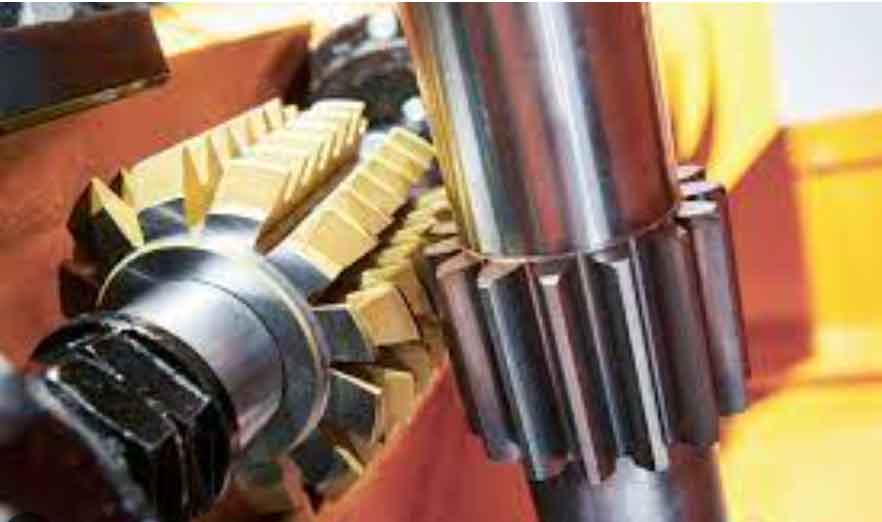
Gear hobbing is a machining process used to generate the teeth of gears. It involves the use of a specialized cutting tool called a hob, which has a series of cutting edges arranged in a helical pattern. The hob is fed across the rotating workpiece to create the gear teeth. Here’s a step-by-step overview of the gear hobbing process:
- Setup: The gear hobbing machine is prepared for the operation. This includes mounting the workpiece, which is typically a cylindrical gear blank, onto the machine’s spindle. The hob is also mounted onto a hob arbor, which is driven by the machine’s hob head.
- Hob and Workpiece Alignment: The hob and workpiece are aligned to ensure proper tooth generation. This involves setting the hob’s helix angle and positioning it correctly relative to the gear blank. Accurate alignment is crucial for achieving the desired gear tooth profile.
- Feeding and Rotation: The hob and workpiece start rotating simultaneously. The hob is fed across the workpiece, gradually cutting into the material and forming the gear teeth. The feeding and rotational speeds are carefully controlled to achieve the desired tooth pitch and helix angle.
- Cutting Operation: As the hob traverses the workpiece, the cutting edges on its periphery remove material to form the gear teeth. The cutting action is achieved through a combination of rotational motion and the axial feed of the hob. The hob’s multiple cutting edges ensure efficient material removal.
- Multiple Passes: Gear hobbing is typically performed in multiple passes, with each pass removing a certain depth of material. The depth of cut is controlled by adjusting the hob’s axial feed and the number of passes. Multiple passes help in achieving accurate tooth profiles and desired surface finish.
- Indexing: After each pass, the hob and workpiece are indexed to align the next cutting position. Indexing involves a precise movement of the workpiece or the hob to ensure the proper spacing and alignment of the gear teeth. This step allows for the generation of the complete set of gear teeth.
- Finishing and Inspection: Once the final pass is completed, the gear teeth may undergo additional finishing operations such as deburring, chamfering, or honing to achieve the desired surface quality. Inspection is performed to verify the accuracy of the gear teeth dimensions, tooth profile, and other quality parameters.
Throughout the gear hobbing process, proper lubrication or cooling may be employed to reduce heat and friction, ensuring efficient cutting and extending tool life. The precise control of cutting parameters, such as feed rate, rotational speed, and indexing, is crucial for achieving accurate gear tooth profiles and maintaining high-quality standards.
Gear hobbing is a versatile and widely used method for gear manufacturing, providing the ability to produce a wide range of gear types with high precision and efficiency.
